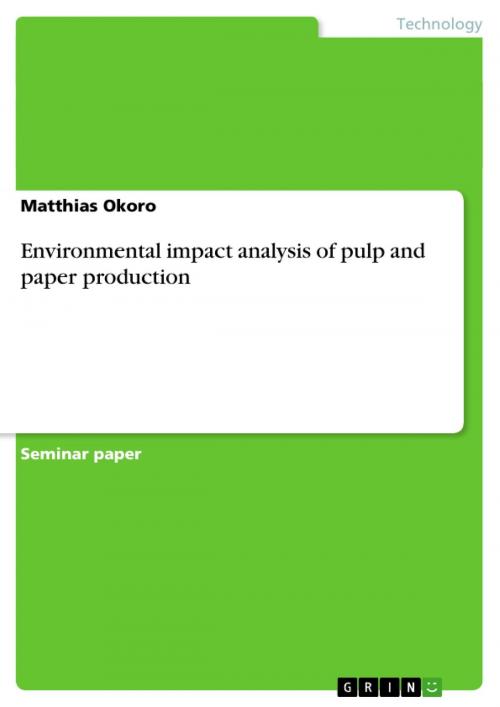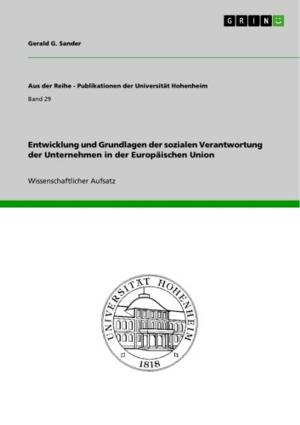Environmental impact analysis of pulp and paper production
Nonfiction, Science & Nature, Nature, Environment, Environmental Conservation & Protection| Author: | Matthias Okoro | ISBN: | 9783656758464 |
| Publisher: | GRIN Verlag | Publication: | October 1, 2014 |
| Imprint: | GRIN Verlag | Language: | English |
| Author: | Matthias Okoro |
| ISBN: | 9783656758464 |
| Publisher: | GRIN Verlag |
| Publication: | October 1, 2014 |
| Imprint: | GRIN Verlag |
| Language: | English |
Seminar paper from the year 2012 in the subject Environmental Sciences, grade: A, University of Nigeria (CENTER FOR ENVIRONMENTAL MANAGEMENT AND CONTROL), course: ENVIRONMENTAL MANAGEMENT AND CONTROL, language: English, abstract: The complexity of the paper issue means that firm conclusions are hard to draw. All paper manufactures causes harm to the environment and more often than not the determining factors in a paper mills. Environmental performance is not the process, paper type or fiber source but the location, mill practice and mill operator. Hence to try to grade paper products or production techniques into some kind of hierarchy of environmental performance, based solely on the manufacture process, is extremely difficult. Yet, globally however, the environmental impact of paper is significant, which has led to changes in industry and behavior at both business and personal levels. With the use of modern technology such as the printing press and the highly mechanized harvesting of wood, paper has become a cheap commodity everywhere. This has led to a high level of consumption and waste. With the rise in environmental awareness on the pollution of the Eco- system by the effluent of pulp and paper it became imperative to run a clearer analysis of its environmental impact.
Seminar paper from the year 2012 in the subject Environmental Sciences, grade: A, University of Nigeria (CENTER FOR ENVIRONMENTAL MANAGEMENT AND CONTROL), course: ENVIRONMENTAL MANAGEMENT AND CONTROL, language: English, abstract: The complexity of the paper issue means that firm conclusions are hard to draw. All paper manufactures causes harm to the environment and more often than not the determining factors in a paper mills. Environmental performance is not the process, paper type or fiber source but the location, mill practice and mill operator. Hence to try to grade paper products or production techniques into some kind of hierarchy of environmental performance, based solely on the manufacture process, is extremely difficult. Yet, globally however, the environmental impact of paper is significant, which has led to changes in industry and behavior at both business and personal levels. With the use of modern technology such as the printing press and the highly mechanized harvesting of wood, paper has become a cheap commodity everywhere. This has led to a high level of consumption and waste. With the rise in environmental awareness on the pollution of the Eco- system by the effluent of pulp and paper it became imperative to run a clearer analysis of its environmental impact.















